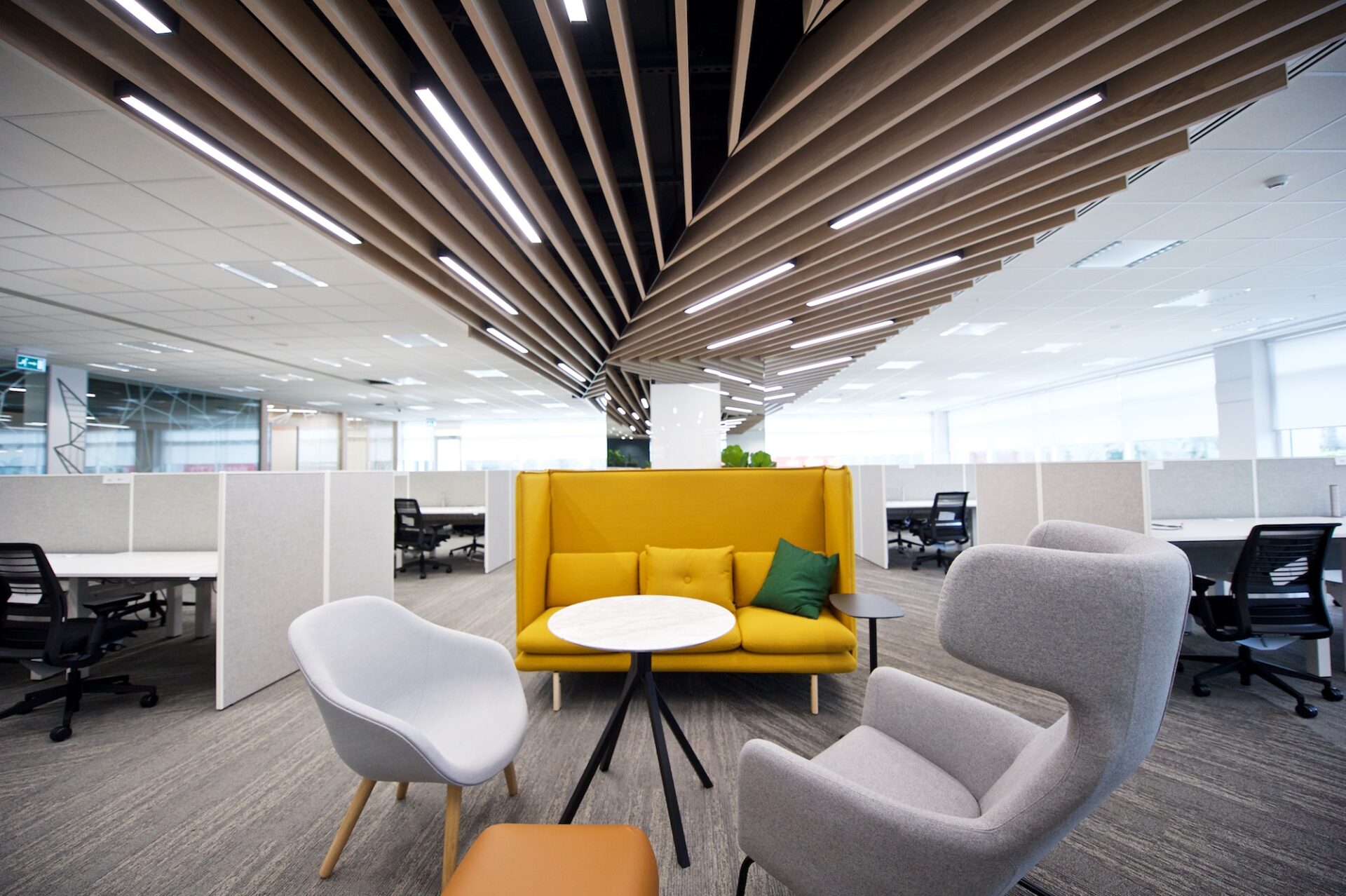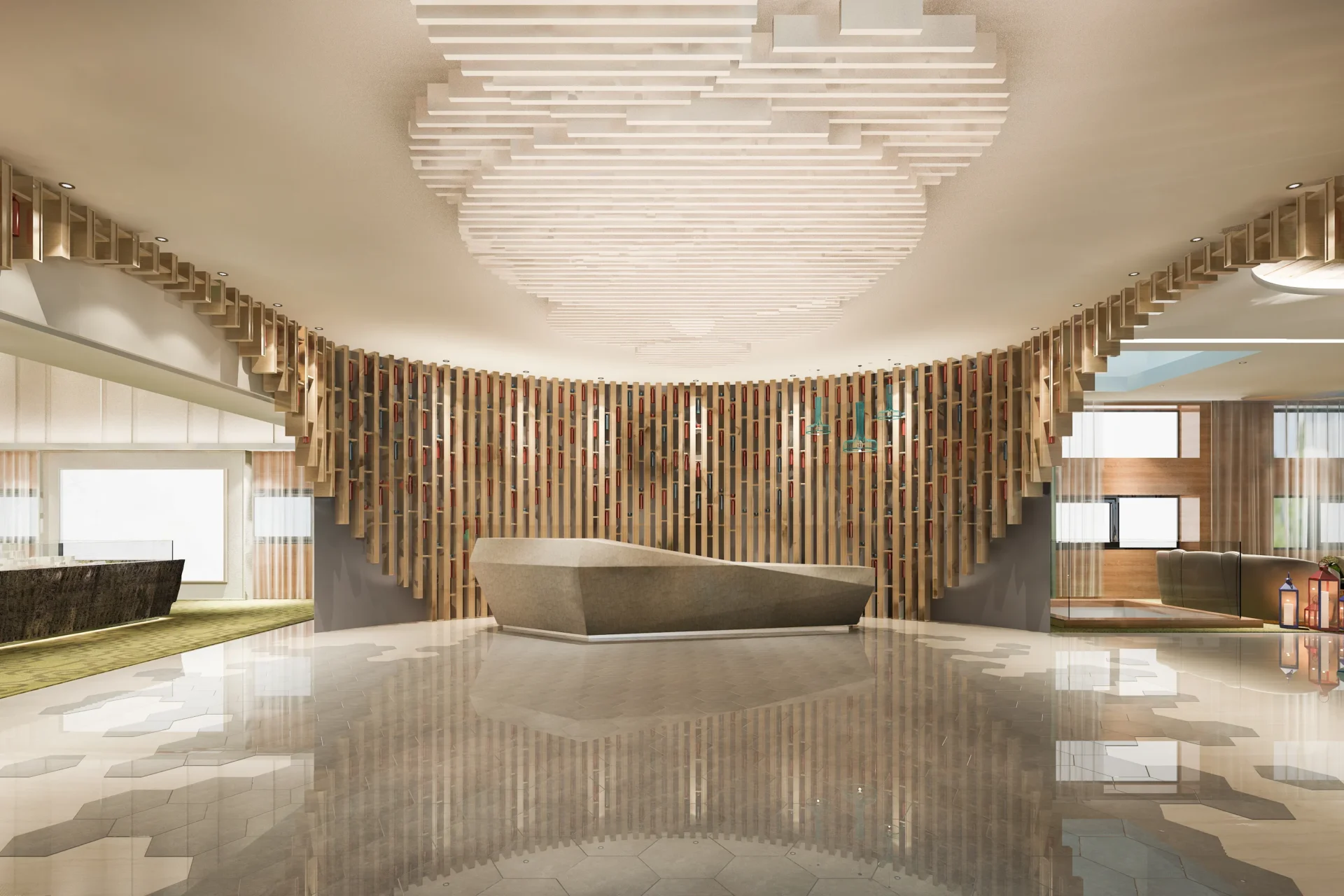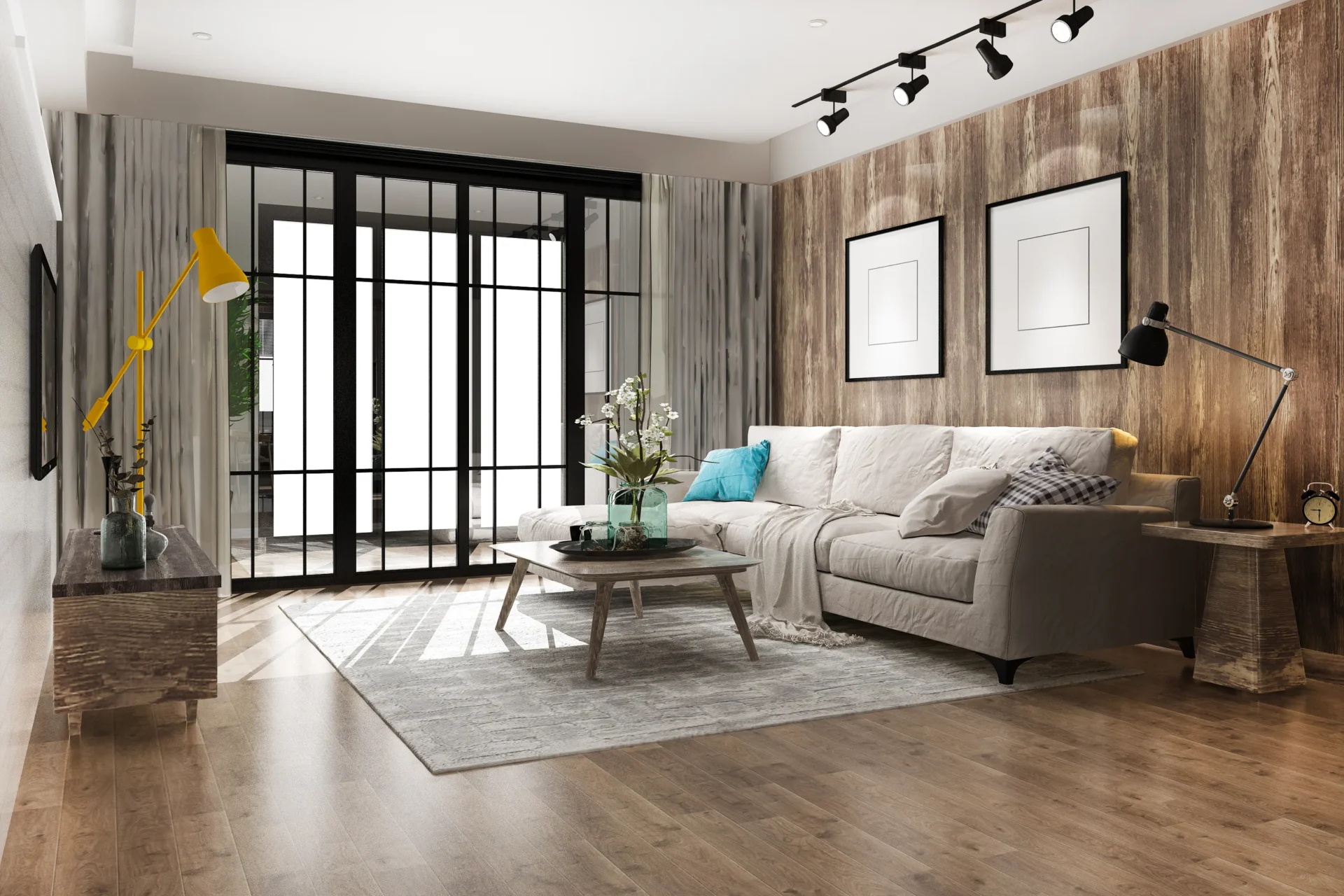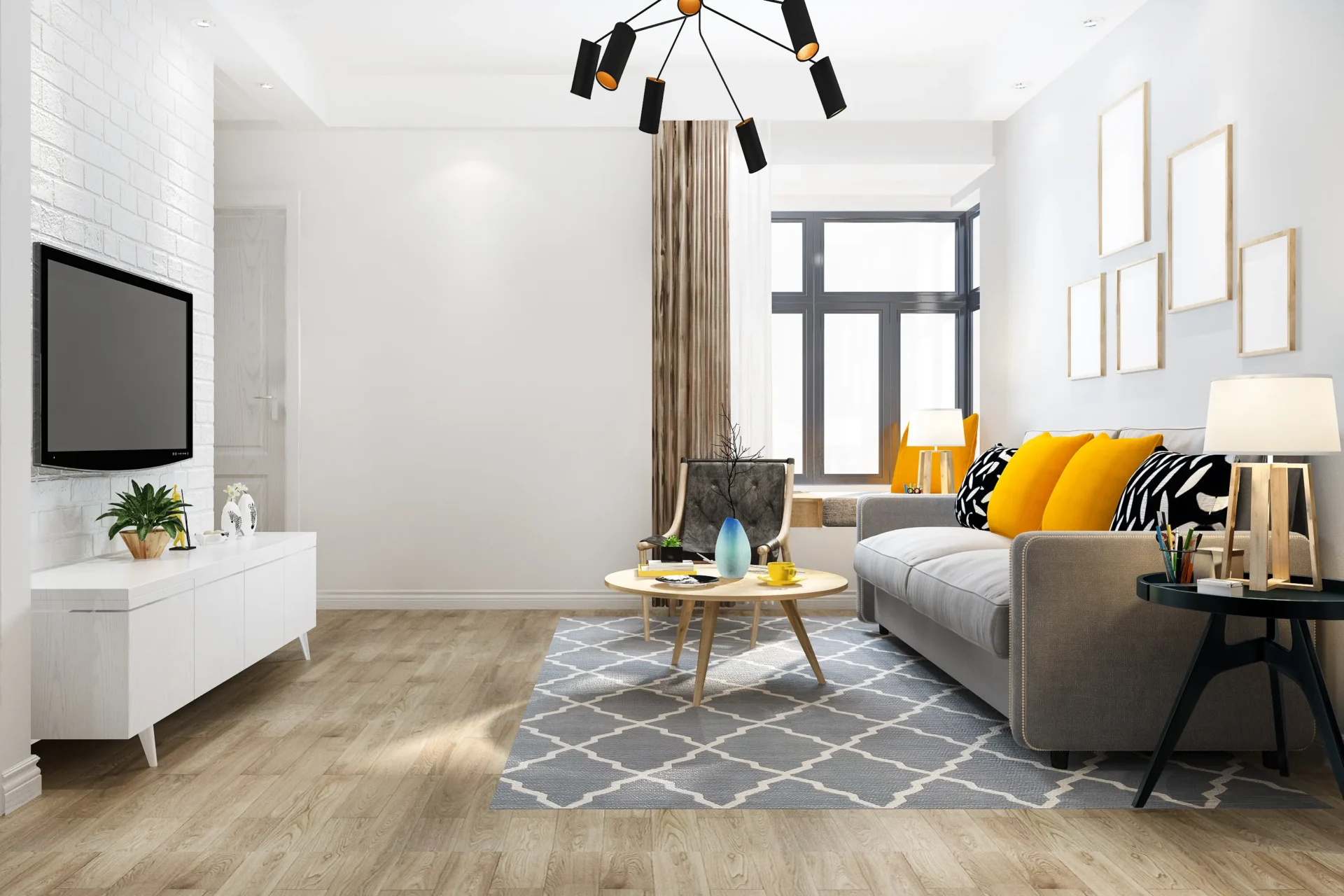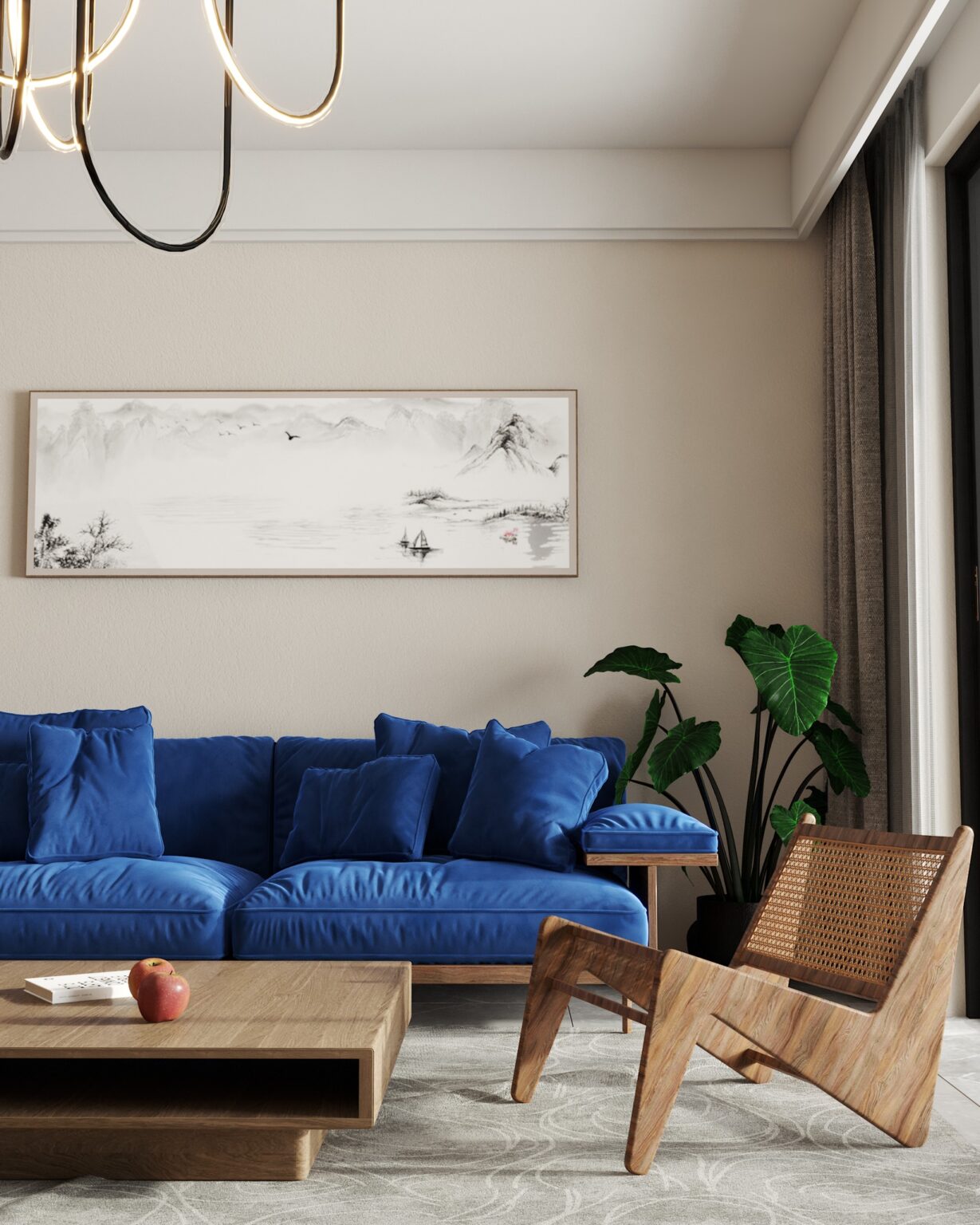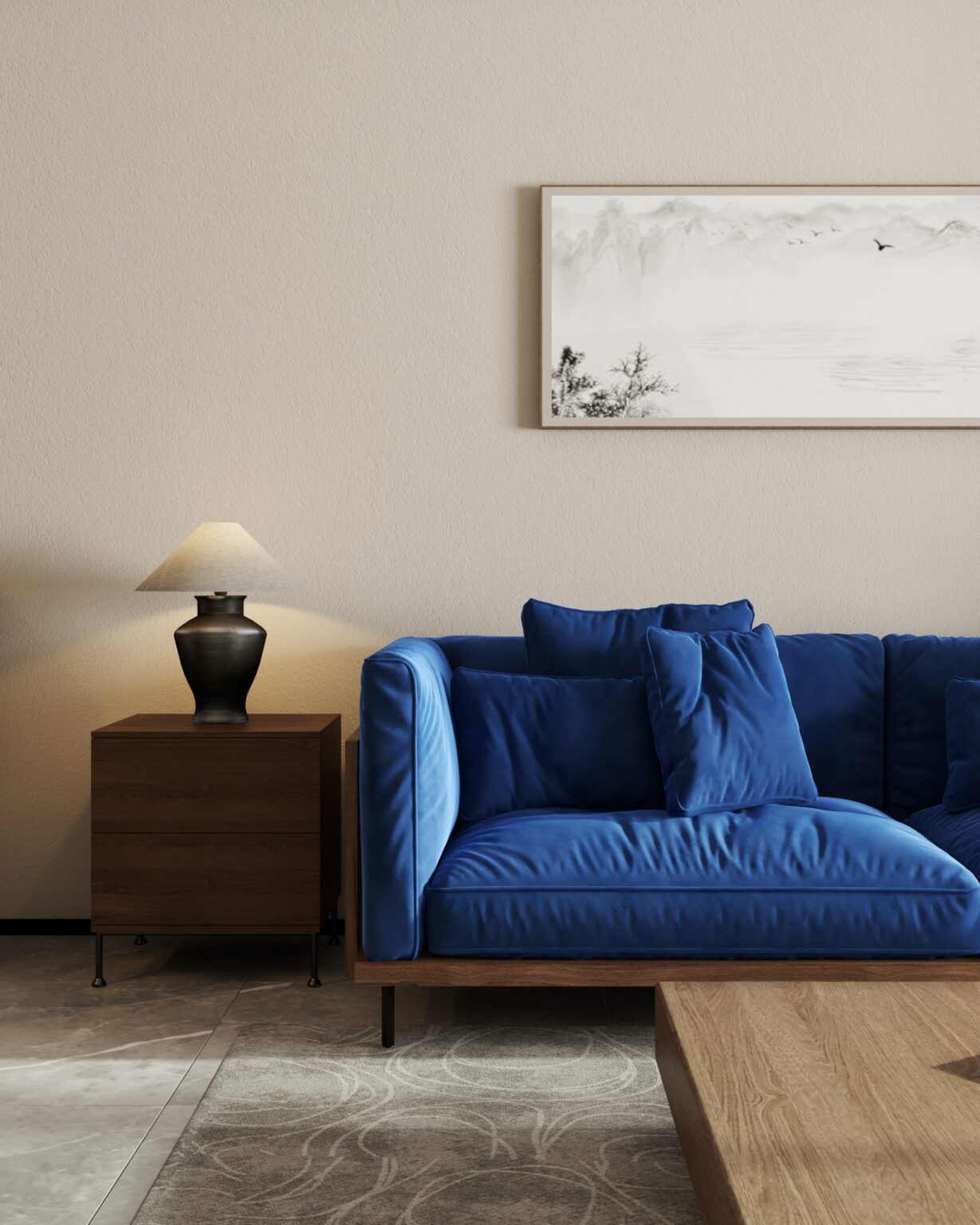Our Phases
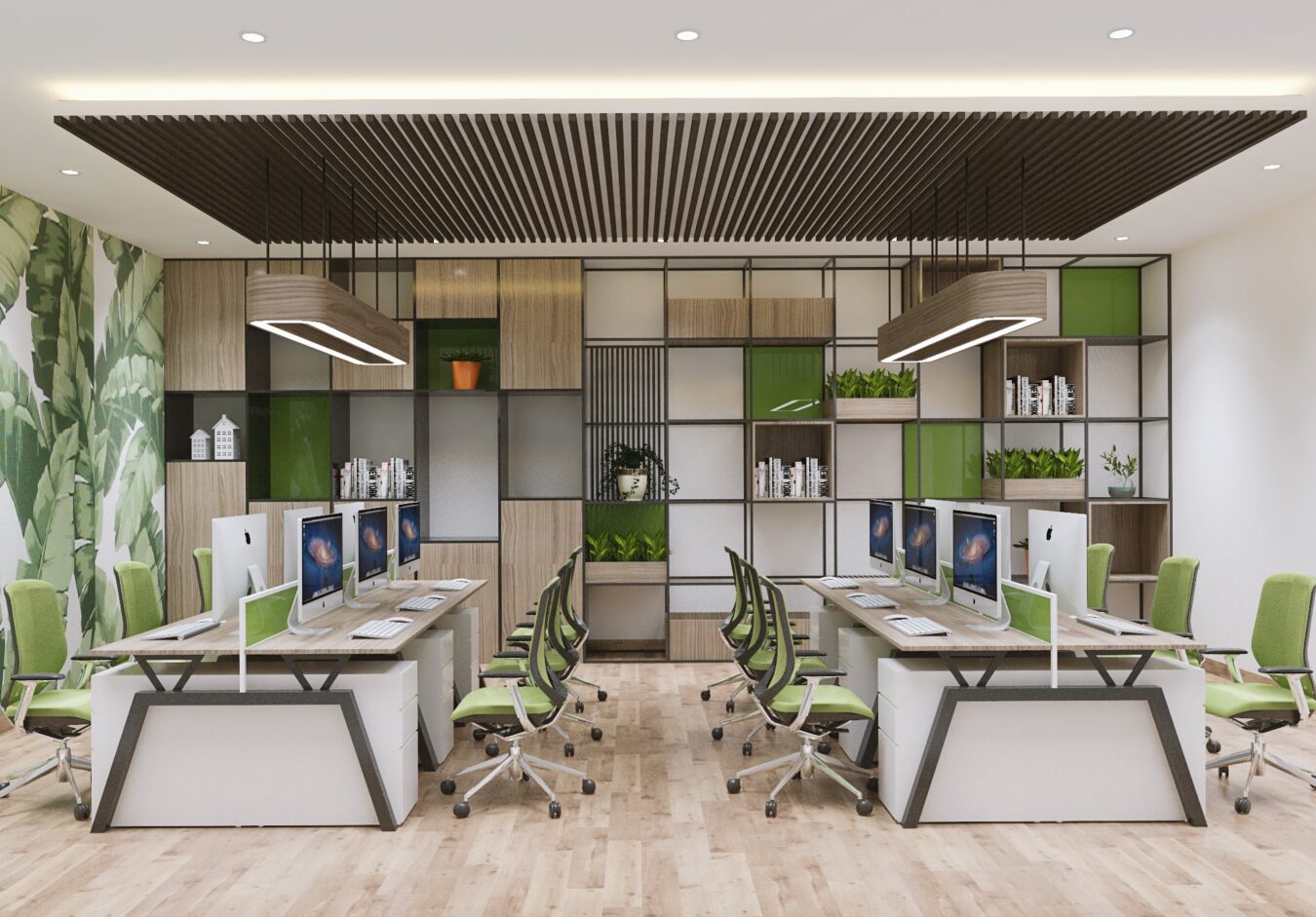

A- Fitout Works
“Fit-out” refers to the process of making an interior space ready for occupation. As a common practice, when constructing commercial buildings, the spaces inside are left bare for the occupants to determine the level of refurbishment needed (or fitting out). Ideally, fit-outs allow the business to plan and create how the establishment will look like. In building preparation, fit-out refers to activities such as the installation of the floors, ceilings, partitions, and furnishings. Additionally, building services such as cabling, wiring, internet connectivity, and communication arrangements may also fall under the fitting out process. The fit-out term refers to activities that need to happen to make an interior space suitable for commercial occupation. The goal of fit-out is to ensure proper planning to execute and deliver projects in as short of a time as possible. The term includes the process of providing the necessary equipment for buildings like interiors, decorations, and fittings.
B- Renovation works
Renovation (also called remodeling) is the process of improving broken, damaged, or outdated structures. Renovations are typically done on either commercial or residential buildings. Additionally, renovation can refer to making something new, or bringing something back to life and can apply in social contexts.




C- Maintenance Works
Building maintenance refers to activities performed to retain and restore the functionality of residential and commercial properties. It aims to preserve a safe, functional, and comfortable environment for tenants at all times. Building maintenance includes a wide variety of tasks depending on the particular business or organization. It encompasses a great deal of “behind the scenes” work to ensure that a facility or building remains functional and comfortable for its users. Building maintenance includes cleaning common areas, removing trash regularly, and repairing items that are broken. It can involve inspecting, repairing, and maintaining electrical systems, heating and air conditioning systems, and other utility services. In some cases, building maintenance extends to the outdoor property as well and includes sprinkler management, lawn care, and landscape management. For Businesses, just about every business requires building maintenance services. Smaller organizations tuck these responsibilities under general operations and outsource services themselves. Larger businesses maintain an in-house maintenance department to manage these needs. For residential complexes, Apartment or condominium complexes maintain a team of building maintenance workers to inspect, repair, and manage all the indoor and outdoor maintenance needs of the entire complex.
A- Furniture Works
Furniture works is the art and craft of designing and creating functional and visually appealing furniture pieces. This includes a wide range of items, from tables and chairs to shelves, cabinets, and other storage solutions. Furniture works can be made from a variety of materials, including wood, metal, and plastic, and can be designed for both residential and commercial settings. The furniture works can be custom-made or produced on a larger scale, and can range from simple, minimalist designs to ornate, decorative pieces. Furniture works forms part of a broader Woodwork trade which also includes Carpentry and Joinery. Furniture works tradesmen are involved with the production of furniture and cabinetry for homes, offices, and commerce. The trade generally involves the use of timber as a primary input in combination with other materials such as fabric, leather, plastics, metals and more to produce products that enhance the livability of the built environment. Furniture production employs a good number of youths, especially for the production of beds, tables, chairs, cabinets etc. It has a large untapped potential to employ even more as the demand for finished furniture has increased tremendously as a result of improved living standards and real estate development. Furniture is one of the essential items in people’s daily life. Furniture is composed of four factors: material, structure, appearance and function. Structure is the backbone, is the basis of the implementation of functions. These four factors are related to each other and restrict each other. Because furniture is to satisfy people certain material demand and use purpose and design and make, accordingly furniture still has the element of material and exterior form respect. Furniture more refers to wardrobe, table, bed, sofa and other large furniture, which are suitable for indoor use. Furniture is material product already, it is artistic creation again, this is the furniture that people often say double characteristic. The type, quantity, function, form, style and production level of furniture and the possession situation at that time, still reflected the social life style of a country and region in a certain historical period, the level of social material civilization and historical and cultural characteristics. Furniture is a country or region in a certain historical period of social productivity development level of the symbol, is a certain way of life in miniature, is a certain cultural form of the show, so furniture condensed rich and profound social.
B- Art Works
An artwork is a physical object that may have an aesthetic and/or conceptual value. This could be a painting, a sculpture, a photograph, an installation, a drawing, a collage, etc. Some works fall beyond the scope of traditional art: this is the case of land art, where the work is made directly in the landscape; performance art which involves an artist's actions in front of a live audience; or ready-mades, where artist gives ordinary objects the status of an artwork. Artworks can be created with a very wide range of techniques, and many artists even combine several techniques and mediums in their works. many artists today tend to combine several techniques and mediums in their artworks. A photograph, for example, may be taken using a film camera, a digital camera, or a Polaroid camera. An artwork is often affiliated with an art movement, a style of art with a specific aim or philosophy followed by artists for a period of time. Claude Monet's paintings are associated with Impressionism, a movement that arose in the second half of the nineteenth century. The history of art is made up of hundreds of art movements. Other examples of significant movements include cubism, surrealism and abstract expressionism.




C- Decorative lights
The term DECORATIVE LIGHTING covers all the traditional kinds of light fitting (floor lights, pendants, chandeliers, etc) and differentiates them from technical or architectural lighting (e.g. downlighters). The basis for the difference is that the decorative light fitting can be seen. And if it can be seen, it matters what it looks like. Decorative lights are the unsung heroes of great lighting design. These statement fixtures are important in conveying specific design themes and can also be used in light layering. Choosing light fixtures can be a complicated task. Lighting and ceiling fans are crucial in not only the functionality of the rooms in your home, but also the design. Decorative light fixtures come in a variety of shapes and sizes and can help you fulfill the important task of including layers of light in your design. Typically, decorative lights play the role of adding a layer of adornment to the area of choice. Although often small, they can have a big impact on the overall lighting design of a room. For instance, the WAC Lighting fixtures in the image here offer a unique style element to the room. Whereas general lighting is often out of view, in the form of recessed cans or flush mounts, decorative lighting is meant to be seen. Often, decorative lighting can even serve as the focal point in the room, think a beautiful, large chandelier. Just because decorative lights are chosen for their aesthetics, does not mean their dimensions and purpose can be ignored. Decorative lights can serve as ambient, accent or task lights, depending on how they are used. For example, a beautiful floor lamp can also serve the purpose of illuminating a reading nook, making it more functional.
A- Design Services
It is the process of envisioning and planning the creation of objects, interactive systems, buildings, , etc. Its user-centered, i.e., users are at the heart of the design thinking approach. It is about creating solutions for people, physical items, or more abstract systems to address a need or a problem. Nowadays, it can be categorized as a fancy sounding word, and there seems to be a certain number of misconceptions surrounding it. But what is it really at its core? Is it simply a process to make pretty looking things? Far from it. It doesn’t focus purely on aesthetics, nor is it about adding ornaments to an item. First and foremost is it about making the user’s interaction with the environment more natural and complete. While not being exactly an art nor a science, it takes elements from both. Art is about creating something that expresses the author’s vision, ideas, and feelings. While designers can express feelings and leave impressions through their work, doing so is not their prime objective. So, it takes the creating aspect of art, as it is about crafting an item, a tool, an experience even. On the other hand, it takes the problem-solving aspect of science. It exists primarily to address a particular need. To quote Steve Jobs: “Design is not just what it looks like and feels like. Design is how it works.” The goal of this process is to guide you and organize your work to turn ideas into concrete solutions. Designers do research and collect information about the problem they are considering: who is person facing this problem? Why? How are other people trying to solve it? From this research, they make a general hypothesis and identify the main features should be part of the answer. Then with these key aspects in mind it’s time to experiment different solutions and iterate. This last part is about learning from what works, what doesn’t to adapt your solution to fit the user’s need best.


1- Interior and Exterior Design
Interior design is the art and science of enhancing the interior of a building to achieve a healthier and more aesthetically pleasing environment for the people using the space. Exterior design is the process of shaping the visual appearance of the exterior of a building or structure, including the grounds and surrounding landscape. Both fields focus on creating functional and visually appealing spaces, with interior design typically focusing on the interior of a building and exterior design.
Interior and exterior design is a multi-faceted profession in which creative and technical solutions are applied within a structure to achieve a built interior environment that solves the customer's problems and links space to business strategies and goals. These solutions are functional, enhance the quality of life and culture of the occupants, and are aesthetically attractive. Designs are created in response to and coordinated with the building shell and acknowledge the physical location and social context of the project. Designs must adhere to code and regulatory requirements and encourage the principles of environmental sustainability. Interior and exterior design can also influence the choice of real estate that will address the organization's needs through the architecture and design elements. The interior and exterior design process follows a systematic and coordinated methodology, including research, analysis, and integration of knowledge into the creative process, whereby the needs and resources of the client are satisfied to produce an interior space that fulfills the project goals.
Our scope includes :-
- Presentation for the design concept
- 3D Drawings
- 2D Drawings
- Materials Schedule
- Vendor List
2- Architectural Design
Architectural design is a discipline that focuses on covering and meeting the needs and demands, to create living spaces, using certain tools and especially, creativity. Therefore, the aim is to combine the technological and the aesthetic, despite the general belief that architecture is only a technological task.
In the same way, it mixes design, understood as the creative process, and architecture, which is based on the creation and presentation of solutions at a technical level. By mixing both disciplines, architectural design seeks the values and formal qualities of the works, through spatial experiences. In general, we associate it with drawings, sketches or outlines of a project, and it is one of its fundamental basis. In this aspect of architectural design, there are also other factors involved, that are related to geometry, space or aesthetics, among others. After all, architecture, and therefore architectural design, is made up of many elements and processes or phases.
When designing, an architect must take into account that he or she should carry out an analysis, to design and build according to the needs and resources, always keeping in mind the aesthetics and technical characteristics, as well as the basic rules of construction. That is why the process, capable of identifying all these variables must consider that it is necessary to reflect the needs, both artistically and technically on the paper (or software). In this case, the lines are the main element of the architectural design, which define several aspects such as the shape, dimension and positioning of the different spaces integrating the project.
Our scope includes:
- Shop Drawings
- As built Drawings




3- BIM Modeling
Building Information Modelling (BIM) is a revolutionary technology that is becoming more common across the world. It offers means to revolutionize the industry, rapidly transforming the way buildings are constructed. BIM creates a digital model representing a physical space and the functional characteristics of that space. It augments the three spatial dimensions of width, height and depth with time, cost and function.
BIM provides the opportunity for construction teams and consultants to maximize time and money, limiting any resulting friction in a project.
Our scope includes :
1) BIM services, modeling, collaboration & As-built from LOD 100 to LOD 500.
2) BIM modeling. Includes delivery of revit 3D models, 2D deliverables such PDF sheets and CAD files, NWC & IFC files, and MS files.
3) Collaborative work, clash detection and walkthroughs.
4) With Revit and its special plugins we provide collaborative BIM environment for all engineering parties out of the company in addition to a collaborative environment within the team internally. While using Navisworks as the best and easiest tool for checking and coordination, we perform walkthroughs and clash detection reports.
5) Project management
Through BIM we are able to extract quantities, manage materials and prices through schedules, planning plugins , operational delivery and more.
B- Commercial Services
Cost Estimating is one of the most important jobs in construction. “Every successful construction project starts with a GREAT estimate!” Demand for well-qualified estimators continues to grow. Construction estimating is the process of forecasting a project’s costs and a good estimate prevents the contractor from losing money and helps the customer avoid overpaying. The purpose of an estimate has a different meaning to different people involved in the process. To the owner, it provides a reasonable, accurate idea of the costs. This will help him or her decide whether the work can be undertaken as proposed, needs to be modified, or should be abandoned. To the contractor, it must provide the cost of materials and labor to install the project as well as make a profit. Accurate estimating is the foundation of profitable contracting. Accuracy must be based on several factors. The estimator must understand the type of construction, the project schedule, availability of skilled workers, and the construction sequence to produce an accurate estimate.




1- Cost Estimation and Tender Management
ONE 2 ONE provides a supportive service to ensure that the organization sees the cost reduction hitting the bottom-line. This service is ideal for organizations that do not have the internal capability and/or capacity to manage contract effectively, or do not see this function as core business and looking to outsource.
Our team has full knowledge about tender life cycle based on different projects. By using very advanced estimation software’s, very high accuracy and quality are guaranteed.
Our scope includes :
1) Cost Estimation; Rough estimate, Budgeting, Cost analysis, Cost breakdown, Data base.
2) Pricing BOQ; Full pricing for all BOQ items including civil, electrical and mechanical works.
3) Cost Reporting; Cash flow, Budget forecasting, Resources usage, wastage.
4) Effective Procurement; Manage all suppliers and subcontractor’s packages, detailed comparison sheets & Strong negotiation to reach the bottom rock.
5) Contract Review & Risk Analysis; Review contract documents, providing full risk analysis and related cost impact.
6) Tender Management; Tender circulars and related effects, Pre & Post tender clarifications and very advanced tender presentation
2- Quantity Surveying
ONE 2 ONE has expert quantity surveying professionals dealing with the venture conveyance from inception to completion of construction. We make sure all forecasts, expenditure statements, contracting documentation and cash flow reports are well prepared for our partners. Besides, Quantity Surveying, cost control, and program management, we calculate the payments (initial, interim and final) for the contractors as per the valuation date.
As expert quantity surveyors, ONE 2 ONE has the required knowledge of construction theories and practices, laws and processes providing the highest level of financial savings and accuracy to our valuable partners
At ONE 2 ONE, we provide integrated solutions to our partners with the most competitive budgets & plans. Through our cost control, we manage all changes and tracks any project delay. We also manage all contractual relationships between various parties involved in the project through. Our Quantity Surveying Solutions includes all services your project would need.
Our scope includes :
1) Billing of Quantity (BOQ); Preparing BOQ as per international standards for different type of projects.
2) Clarifications; Checking all drawings and sending related clarifications to the client to have full understanding and removing any conflict.
3) Tender & IFC Drawings Comparison; Ability to create full compassion between tender drawings and IFC drawings.
4) Ongoing Projects Support; Particle experience in ongoing project to help client making very smooth delivery.
5) Variation Orders; Checking any changes happened in the scope and support client to submit the variation orders in a professional and a clear way.
6) Q.S Full Back-up; Providing full back-up showing all Q.S details and link it with drawings and BOQ for easy reference and checking




3- Value engineering
Value Engineering is used in construction projects to provide a clear and detailed analysis of how best to meet the goals of the construction project. When Value Engineering is used with cost estimating, it allows an independent review of the entire construction project. This review process, typically completed within a Value Engineering workshop, is focused on one common goal: to provide the highest value at the lowest cost. With Value Engineering you are able to eliminate stressors, identify potential barriers, bring new design and materials to the project, limit environmental risks, and keep future maintenance costs of the project low. Value Methodology offers the following benefits Our scope includes : 1) Cost Improvement 2) Performance Improvement 3) Productivity Improvement 4) Quality Improvement 5) Time-Saving 6) Integrating VE with Continuous Improvement Techniques
4- Schedule management
Large construction projects are likely to fail if there isn’t an effective project plan or schedule in place from the beginning. Construction management can aid efficient planning and scheduling by creating an integrated work environment to stay on the same page with stakeholders and take tasks head-on without fear of some risks. Preparing a specific construction schedule ahead of time will ensure efficiency and productivity. The project schedule allows the construction team to control quality measures, as well as maintain the resources needed in each phase of construction. Time is money; a reliable schedule gives each party the opportunity to allocate time to all activities to avoid delays and cost overruns. Our scope includes: 1) Schedule Management; Schedule management plan and related narrative 2) Preliminary Schedule; Development of the baseline or preliminary schedule 3) WBS Development; Development of WBS, calendars, activities, resources, cost loading and logic 4) Manpower & Equipment Histogram; Developing manpower & equipment histogram has never been easier and more accurate 5) Planned & Actual Cash Flow; Preparing planned & actual cash flow reports on timely manners 6) Variation Orders’ Time Impact; Handling any modification or change to works agreed in the contract on timely manners




C- Supported Services
Because of our expertise is the whole construction process from A.to.Z ,Our job is not only designing your project and providing the commercial assistance but also helping our clients in the procurement and technical services towards the client targets “ Quality , Time & Cost”.
1- Procurement Support
Procurement has been a vital, transactional part of conducting business for almost as long as commerce has existed. Although the days of scribes tracking purchases on papyrus scrolls are long past, the process of carefully selecting and purchasing the goods and services needed for day-to-day business operations remains as important as ever. By enabling the company to reliably get the supplies it needs at the lowest cost, procurement can directly impact the bottom line. Procurement encompasses a range of activities involved in obtaining goods or services. What is the purpose of procurement? In general, procurement teams work to obtain competitively priced supplies that deliver the most value. Procurement is a vital business function. When managed efficiently and done well, it can help increase your business’s profitability. It includes a range of activities involved in obtaining goods and services, including sourcing, negotiating terms, making purchases, tracking when supplies are received and maintaining records. It’s important to continuously monitor and assess the procurement process to improve any weak spots or inefficiencies. Technology can reduce procurement cost and administrative overhead by automating and tracking procurement processes. Procurement involves every activity involved in obtaining the goods and services a company needs to support its daily operations, including sourcing, negotiating terms, purchasing items, receiving and inspecting goods as necessary and keeping records of all the steps in the process. Procurement is an important step in understanding supply chains, because it helps a company find reliable suppliers that can provide competitively priced goods and services that match the company’s needs. That’s the case whether the company is seeking raw materials for manufacturing, a marketing services provider or new office supplies. Minimizing cost is one important aspect of improving your procurement processes. But it’s also vital to identify suppliers that provide the quality of goods and services that the company needs and have the capacity to deliver reliably and a track record of doing so. The procurement process generally involves a number of steps. The business identifies particular goods and/or services that it needs, sources the suppliers that will help the company reach its business objectives, negotiates terms and costs and then purchases and receives the relevant items. It’s important to remember that procurement doesn’t consist of a series of isolated acts — it’s an ongoing process For example, businesses generally aim to establish relationships with key suppliers to help obtain the best service and lowest possible costs, which ultimately translate into higher profit margins. Companies may also need to conduct regular quality assurance checks and performance analysis to make sure suppliers consistently meet expectations. By monitoring procurement KPIs, businesses can boost the efficiency of their procurement process, track progress toward business objectives and identify areas for improvement Our scope includes: - Studying the complete project Documents and requirements. - Preparation of Packages list along with the related competitive vendor list - Segregation of the packages including all supported documents - Sending request for Quotation to all vendors and other complied alternative subcontractors and suppliers - Preparation of the technical & commercial comparison with all subcontractors / suppliers - Select for client approval the best subcontractor / Supplier as a Quality, Lead time and cost with full compliance to the scope of work and project requirements - Coordinating with the selected subcontractor / supplier for the Payment terms, Program of works and all other contract terms for client approval - Following up with the selected subcontractor / Supplier for the technical and design approvals - Tracking the material delivery to the client site and controlling the QA/QC inspection approval at site - Submit a procurement and tracking log on weekly basis to the client till the completion of the project.
2- Technical Support
Technical services” means activities or programs designed to enable businesses, commerce, and industrial establishments to acquire and use scientific and engineering information more effectively through such means as Preparation of Materials Submittal approval includes all technical submittals , compliance statement , warranty , subcontractors / suppliers Prequalification , Samples approvals , GSAS Compliance and other Our scope includes: - Studying the complete project Documents and requirements. - Preparation of the MAR Log includes all project materials and the detail and the status of each materials. - Coordination with all awarded Subcontractors / Suppliers for the full Submittal documents include compliance statement of all materials. - Reviewing all submitted documents to achieve the Complete compliance with the project requirements. - Submitting the material submittal documents for the client Final approval. - Submitting for the client complete a material submittal Log for all materials with all supported documents achieving the complete approvals.

DESIGN SERVICES

COMMERCIAL SERVICES

SUPPORTED SERVICES

Furniture Works

Art Works




